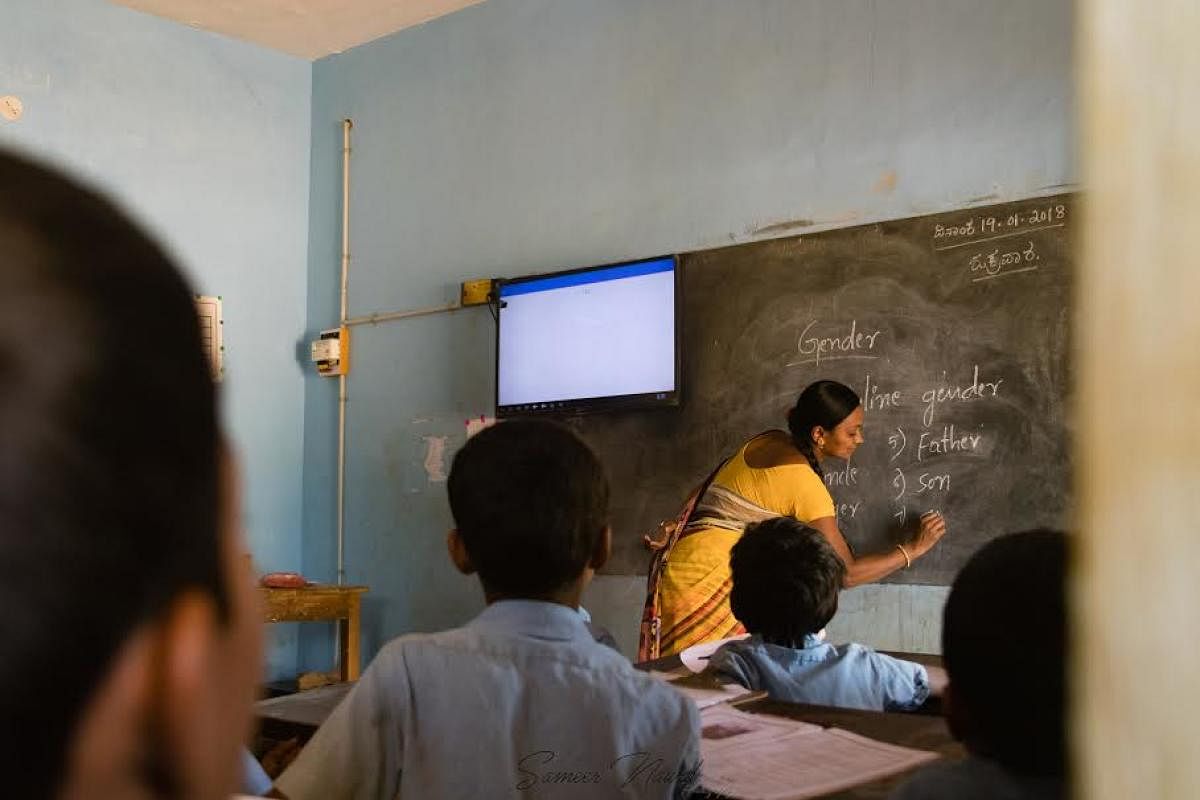
The recent proposal of the Karnataka government to open English medium sections in 1,000 primary schools has attracted criticism. Primary Education Minister N Mahesh has highlighted the step as a response to declining enrolment in government schools. Parents prefer private schools because they offer instruction in the English medium. Several studies confirm that parents see English as the language of the Indian elite. Fluency in English offers more opportunities, including good higher education and white-collar jobs.
Though most schools, including government schools, offer English as a subject from Class 1, parents feel that for acquiring adequate competency, English needs to be the medium of instruction as well. But in most states, government primary schools provide instruction in the state language, and other Indian languages spoken in their geographies. The Right to Education Act (RTE), passed by Parliament in 2009, also requires primary education to be offered in the home language, “as far as practicable”.
Language learning
There is a fair degree of consensus among language experts that every child is capable of learning more than one language. In many parts of India, especially urban locations, people can converse in more than one language. However, language experts also assert that initial learning is best done using the home language as the medium, since the child being admitted to Class 1 is invariably competent in the home language.
Stephen Krashen, an expert in second language learning, suggests three important principles that are responsible for the success of learning the home language and which need to be followed for effective learning of other languages as well. Firstly, an input-rich environment is essential for language learning. The infant is constantly exposed to her parents’ and siblings’ speech. Secondly, for formal language learning, the focus should be on meaningful and comprehensible inputs. Young learners are interested in learning if it is a meaningful activity for them. Thirdly, language learning should happen in a stress-free environment. In the case of the home language, the child is not pressured to speak.
Once a strong foundation is laid in the home language, learning a second or third language later is easier as language skills are transferable. Just as every child is able to learn his or her home language before he or she goes to school, similarly, he or she should be able to learn second and third languages in school, including English. Though English is taught as a subject in most primary schools, this does not seem to be happening.
The reality is that in most (non-elite) Indian homes, there is little or no support for English. The school, too, is unable to provide an environment where the child has adequate opportunities to listen to English, as most teachers do not have proficiency in the language.
Secondly, there is pre-mature pressure on the learner to write, which is the most difficult of all the language skills, without adequate exposure to listening and reading. Examination pressures also affect learning the language.
Thirdly, the teaching of languages in many Indian schools follows the method of memorising content for reproducing in examinations. The learner has few opportunities to use the content meaningfully to build communication skills. All three principles of Krashen thus fail in the Indian school environment. Learning multiple languages is more often due to peer or mass media influences.
In such circumstances, making English the medium of instruction can create a further barrier to learning. Being weak in English would affect abilities to learn mathematics, science, social science etc., compounding failure in English.
Private schools have cashed in on the desire amongst parents for English medium, as it is lawful for an individual or institution to open a school and choose the medium of instruction. However, failure of Krashen’s principles is not limited to government schools. In addition, the pressure to do well in the examination can be higher in private schools, making language learning even more difficult.
Also, when we say ‘private schools’, we are masking a wide stratification. There is a very small minority of elite affluent schools, where it is possible that teachers are able and willing to teach English following Krashen’s principles, which are resource intensive. However, a large number of private schools are the so-called ‘affordable’ schools, funded mostly from the meagre fees paid by students coming from lower middle class and poor families. These schools employ unqualified teachers, pay them poorly and cannot afford to invest on their professional development. Hence their teachers are unlikely to have capability to teach English. Thus, ‘English medium of instruction’ in poor private schools is a tragic deception of parents.
By announcing English medium sections in primary schools without investing adequately in adequate curricular resources, in teacher education to strengthen teachers’ ability in English and changing their language teaching methods, the Karnataka government is unwittingly perpetrating a similar fraud on the children of the poor.
There are other steps that the government could take to reverse the trend of declining enrolment in government schools. The ‘public education rejuvenation campaign’ of the Kerala government has reversed the decline in admissions to their primary schools. This campaign sought support from local communities to strengthen schools and focused on improving infrastructure and academic quality in government schools.
Karnataka needs to immediately invest significantly, to build teachers competencies in English language, reform language pedagogy and provide a resource-rich environment in the schools, complementing textbooks with audio and visual resources. This will, over time, enable students to learn English at the primary level.
(The writer is Director, IT for Change, Bengaluru)